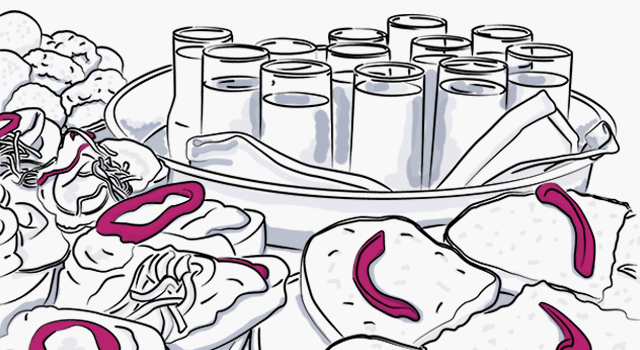
Catering Preparation 101: Why the Event Space Layout Affects Everything
Every big event you cater takes meticulous planning to run smoothly and successfully. A huge part of your catering preparation should be visually laying out the event space, so you, your staff, and your client know exactly where to go and where all the pieces will be.
After all, everything has its time and place. Still, the little details can change based on your event and venue, and each one of those details needs should be mapped out in your plan. Here’s how your strategy can adapt for a variety of popular event and venue types. There’s a bonus catering checklist at the end of this post, be sure to check it out!
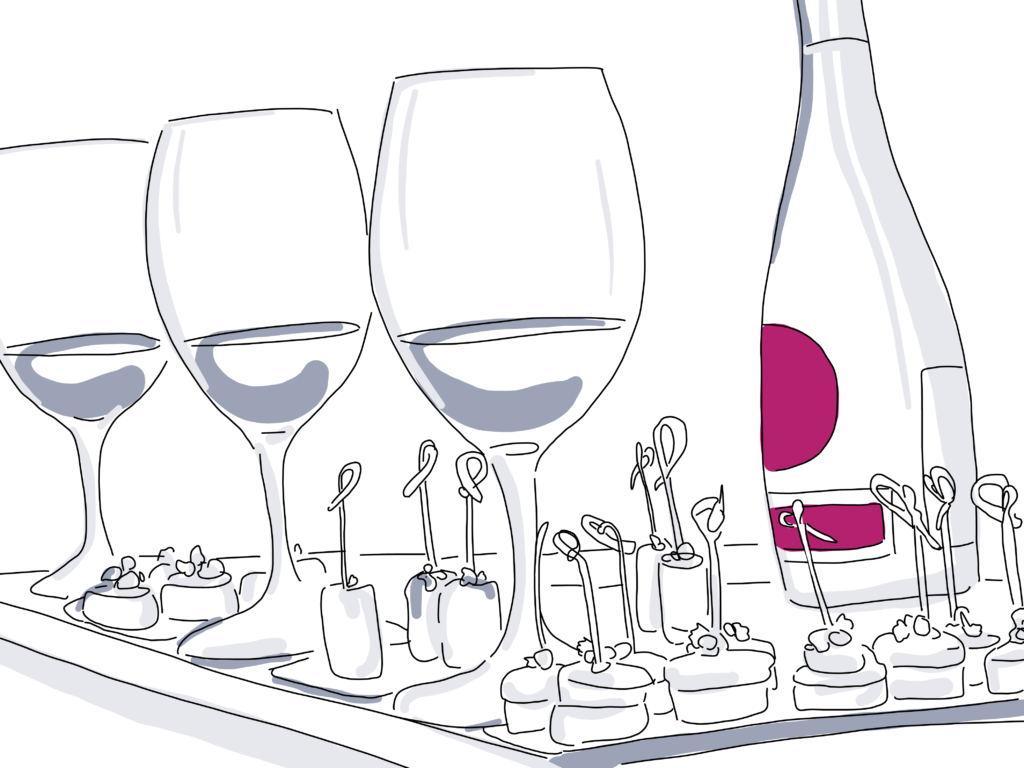
Pro Tip: Caterers are far past the days of mapping room layouts with pencil and paper. Using collaborative event diagramming software can save you tons of time and headache while keeping everyone on the same page.
Your catering preparation depends on the layout and type of event.
1. Banquets
From weddings to award ceremonies and charity events, the banquet layout is a popular seating style for event planners and attendees. Usually meant for sit-down meals, this is your classic setup comprised of multiple individual tables with a group of people at each.
For caterers, this type of sit-down meal usually means having servers. You might be able to get away with not having servers by opting for a buffet, but you have to keep in mind that there are a lot of negatives to buffets that other serving styles don’t encounter ” from portion control to chaotic buffet lines. When you have banquet style seating with a sit down serving style, it’s usually much more efficient.
Pro Tip: Map out who’ll be sitting where, identifying seats that might have special directions for meals or dietary restrictions. If you have a solution you use to store files online for events, you can easily pull past templates and adapt them for gatherings in the same venue.
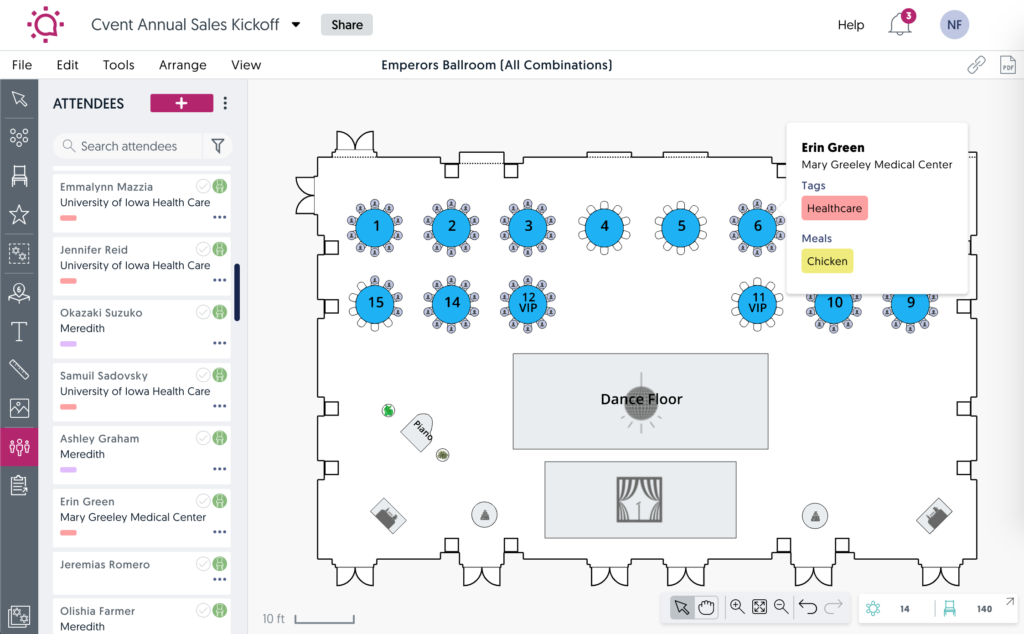
2. Conferences
Conferences come in all sizes when it comes to the volume of attendees. The seating is generally arranged with the goal of having the middle and front of the room as focal points. Double rectangle layouts or the typical classroom layout are how conference seating is traditionally arranged. But in recent years, the push from attendees to plan more experiential meetings and events has made it so that you can’t bank on these classic seating styles ” which makes it all the more important to map it out beforehand.
Usually with conferences, people won’t eat while the event is going on. They’ll eat before, after, or during a break in the event. Since everyone is eating at once, it’s important you design a serving style that doesn’t get to crowded. If guests aren’t eating until after the conference you’ll most likely see a mad dash to your food. One way to combat this in your catering preparation is to consider having multiple stations so that you can split the crowd up.
Pro Tip: According to an IACC survey, many planners are beginning to opt for continuous service throughout the day instead of set dining times. This is a great upsell opportunity for caterers, and actually makes the job easier as it eliminates the chaos of the traditional lunch rush.
3. Outdoor Events
Outdoor events always present a unique opportunity for caterers. They’re usually high-volume events that take place in venues like parks, beaches, or amusement parks, and oftentimes don’t have set seating. That means the head-count can fluctuate between what’s expected and who actually comes.
If you’re catering an outdoor-only space, you’ll first want to make sure your operation is in a shady place. You don’t want your food spoiling before the event is over. You’ll also want to consider where to set your catering operation up in relation to the main attractions of the event. And if the event features other food suppliers, you’ll want to position yourself to catch a majority of the attention.
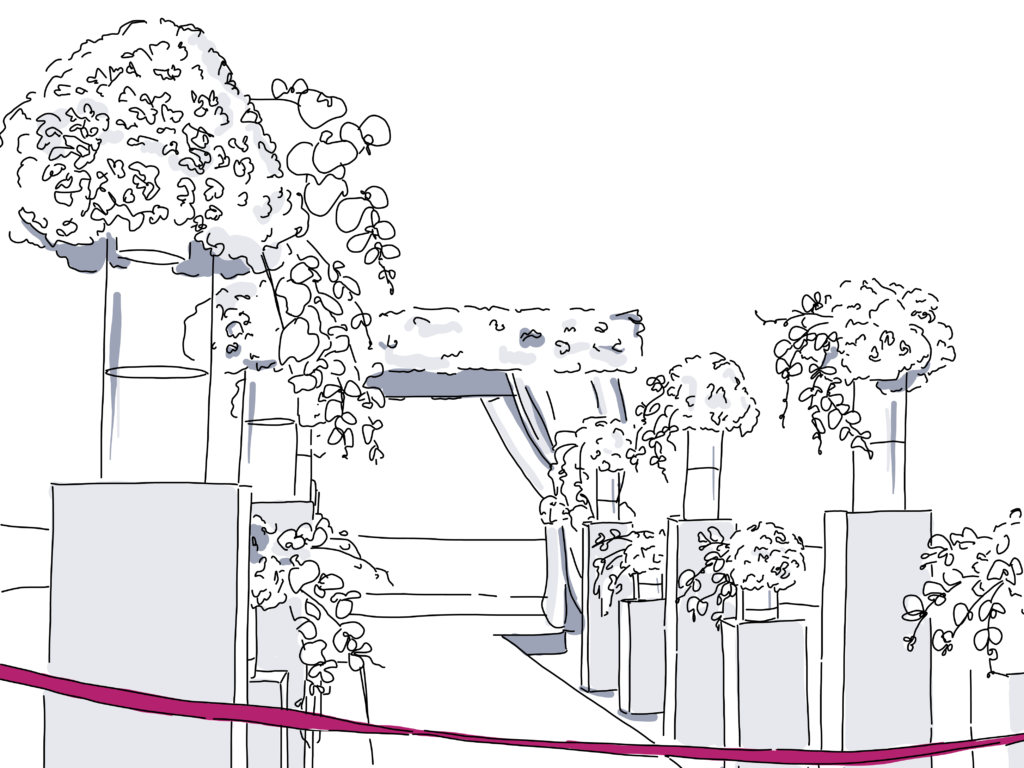
Pro Tip: Outdoor events are usually standing-only, so they can easily get very crowded. Plus, people get the most fatigued when they’re outside all day, so you’ll want to set up in an easily reachable location.
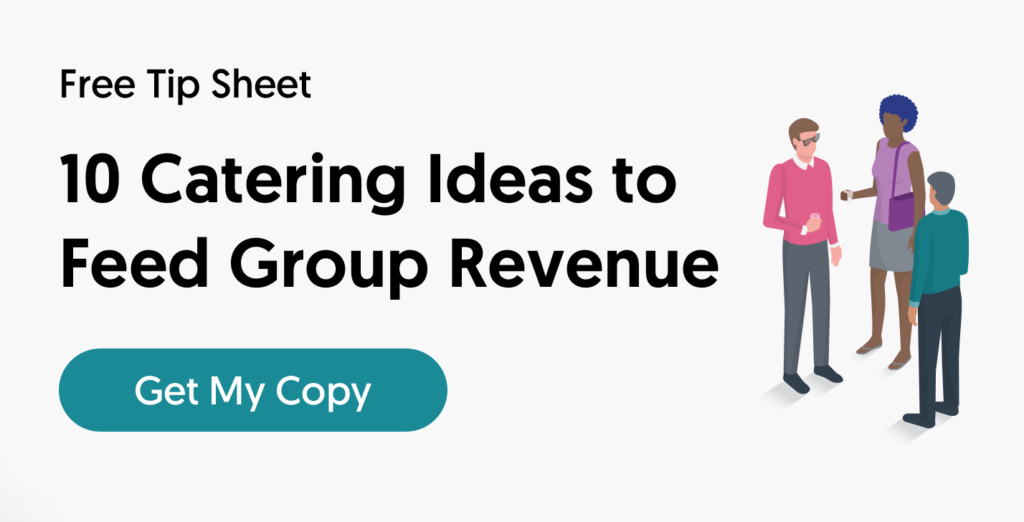
4. Nontraditional Events
Nontraditional venues and events are more and more common these days. In fact, it’s one of the event trends to keep an eye on in the year ahead, as the AMEX Global Meetings Forecast predicts a 3.8% uptick in demand for nontraditional venues. People are having their events in aquariums, warehouses, parking lots, airports, and other surprising venues, and with these unconventional types of venues come unconventional room layouts.
Plus, the unique seating arrangement and general layout tend to present their own unique challenges. Make sure to include all of these challenges ” from obstacles to unorthodox entrances ” in your event diagram and share it with staff as part of your catering preparation for the big day.
Pro Tip: It’s extremely important that you get a walkthrough of unique spaces before the event to properly prepare. Nontraditional spaces are usually unequipped for food preparation or service, so they may require you to bring additional materials.
As a caterer, planning for the room layout should always be part of your preparation process. It can affect your staff, your overall bottom line, and the happiness of your clients. Each different type of seating layout you and your team encounter should have its own set of procedures as to how you operate. By mapping these specific nuances out in advance, you’ll be ready to take on just about any event.
The 5 Items That Should Be On Every Catering Checklist
1. Detailed and Signed Contract
One of the first items for your catering checklist should be a detailed, signed contract. What should be included in a catering contract? It should include your menu, a clear list of expected tasks, a detailed event floor plan, and a break down of the day’s events. Once you have double checked and checked your contract again, it is important to for you and your client sign the final contract. Take it from me: you can never be detailed enough for an event. Not only does this help you cover all of your bases, it also keeps even the most disorganized clients informed.
2. Special Needs and Dietary Restrictions
The next catering checklist items are special needs or dietary restrictions. An event planner may not always know dietary restrictions right off the bat so it’s a good idea to put these needs on their radar early. Attendees with special needs like dietary restrictions don’t want to be a burden to their host, but I’ve never heard a vegetarian complain when they receive a specially designed meal instead of a plate of pasta.
This category also extends to needs like a mother’s room or accessibility for event guests with a disability. Events can be a large out of pocket cost for an attendee and when your host is able to extend a special touch, it will go a long way.
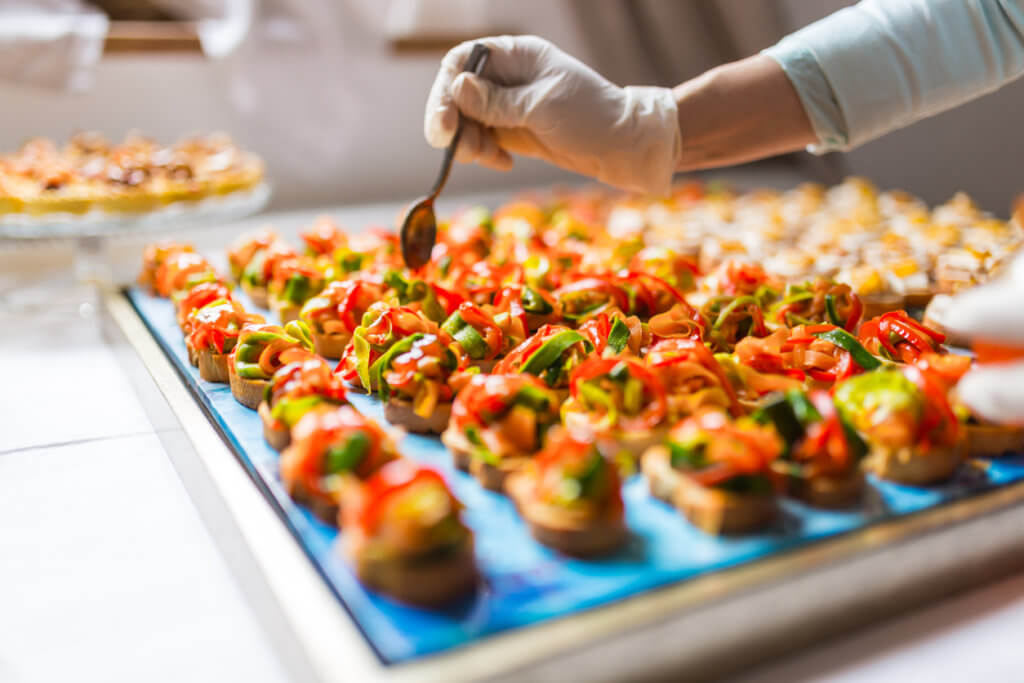
3. Vendor Contact Sheet
While you may be the go-to vendor for the event, there will be a number of people that will help the event come together. If you are assisting in planning an event, it is important to put together a list of vendors, time of arrival to the event, and a day-of contact person with a phone number for each company. It is not rare for a vendor to get lost, drop off the items at the wrong venue, or be on a different time line. This list will help you be prepared to put out any fires without alarming your client.
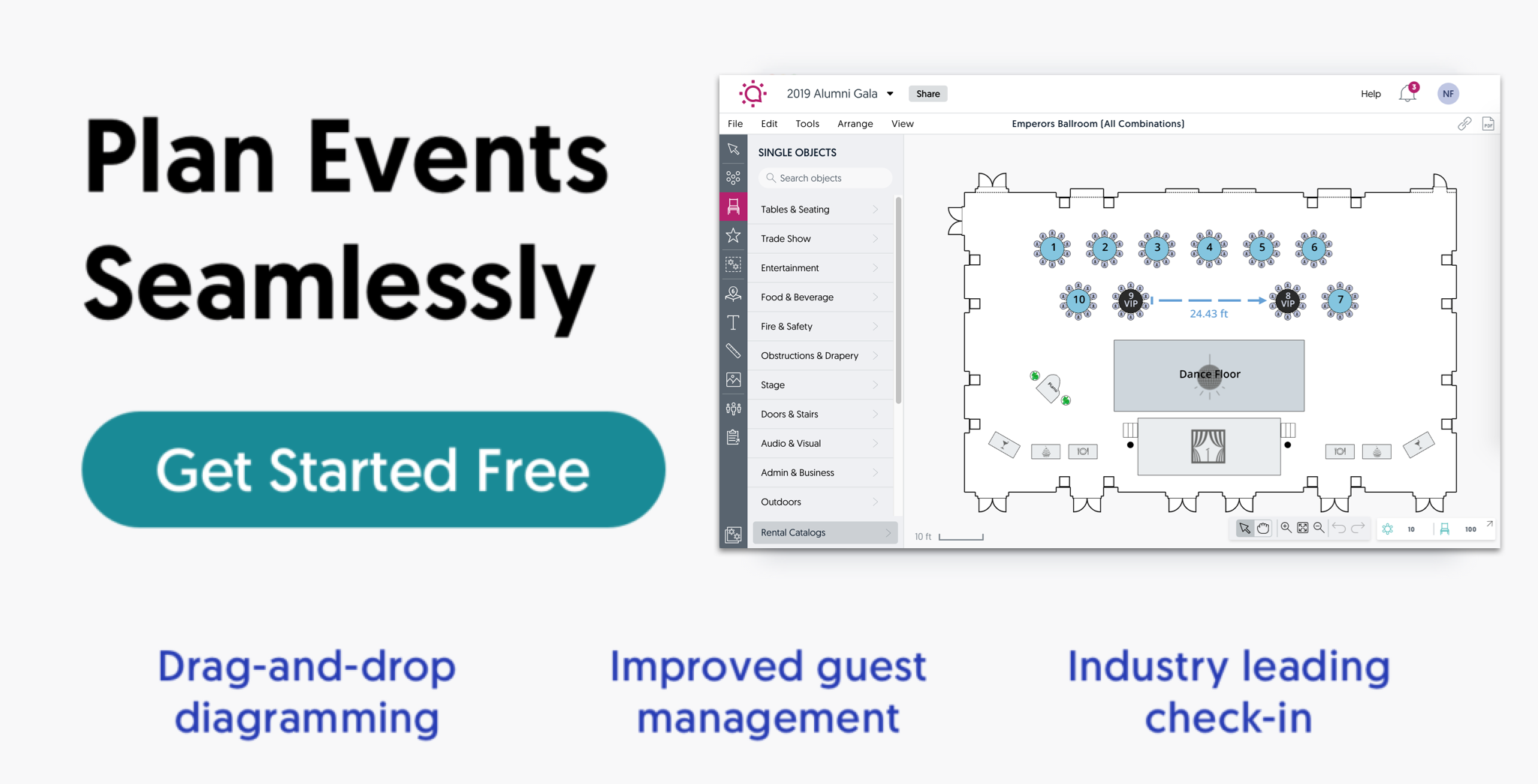
4. Venue Walk Through
Whether you are working at a venue for the first or fiftieth time, it’s important to schedule time to walk through the flow of the event with your client in the venue. Creating an event diagram can aid in your walk through and eliminate any confusion in your communications. Because let’s face it: nobody wants to rearrange all of the tables half way into the setup. This will also help you confirm that you have enough room for the elements you’re contributing to the event, like that strolling bananas foster cart.
Bottom line: 65% of the population are visual learners, so you don’t want to lose a client because they can’t picture their event before it happens.
5. Post-Event Expectations
An often forgotten catering checklist item is what happens post-event. Sometimes your focus can be so tuned into the event you might gloss over the ending details. Who will be responsible for taking the centerpieces home? What about the details of cleaning up the venue? Nothing can turn a perfect event sour faster than losing the top of your client’s cake or forcing them to pay a fee because you didn’t clean the kitchen properly. Don’t let a minor detail sweep away your rave reviews.
A caterer is often asked to put on more than a chef’s hat over the course of planning an event. We’re usually the first to arrive on-site and the last to leave. So you can imagine that over the course of the day we will be tasked with so much more than serving up delicious food. Instead of a chef hat, a caterer may need to become a magician pulling all of the tricks out of their hat to ensure event success. And no event is perfect or 100% stress-free. But if you start with this catering checklist and customize it to your needs, you will be on the right track to success.
Looking to streamline your catering prep? Check out how our event catering software and event layout software can speed things up and have a big impact on your bottom line.
Still have some questions about catering preparation?
As an event planner, if you are hiring a caterer, the most important way you can prepare for a catered event is to set up your layout in the most optimal way for attendees to get food and beverage in such a way that makes sense in the context of your event.
This varies with every event, so it’s crucial you work together with a caterer to determine who will be providing what for an event.

